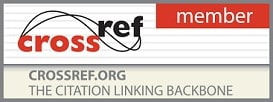Vol. 9, Issue 5, Part G (2025)
A KAP study on fortified foods in adolescence and adulthood at Ranapratapnagar, Udaipur
Charu Nagar, Alok Kumar Saini, Gaurav Dhaked and Brij Kishore Singh
Micronutrient deficiencies are a serious health problem globally. Food fortification aims to add micronutrients to staple foods to overcome their deficiency. This study aimed to assess the demographic characteristics, knowledge, influence, and usage patterns of fortified foods among a sample of 140 participants, including both adolescents and adults. The primary occupations included self-employment (28.57%) and private service (26.42%), reflecting varied economic backgrounds. Knowledge about fortified foods was highest for salt (91.42%) and milk products (77.14%), while eggs had the lowest awareness (30%), indicating gaps in public knowledge. Adolescents demonstrated higher knowledge and influence (40.71%) compared to adults (25%), suggesting that recent educational exposure may play a crucial role in awareness. In terms of usage, fortified salt (92.86%) and edible oil (72.86%) were the most commonly consumed, while rice (14.29%) and wheat flour (30%) had lower adoption rates, highlighting potential disconnects between awareness and actual consumption. Overall, the average awareness stood at 65.24%, while average usage remained at 50.57%, indicating a substantial gap. In conclusion, awareness about fortified foods is at a moderate level among adolescents and adults, which should be increased through campaigns to make people more and more aware of fortified foods so that micronutrient deficiencies can be overcome in the community.
Pages: 570-573 | 216 Views 95 Downloads






